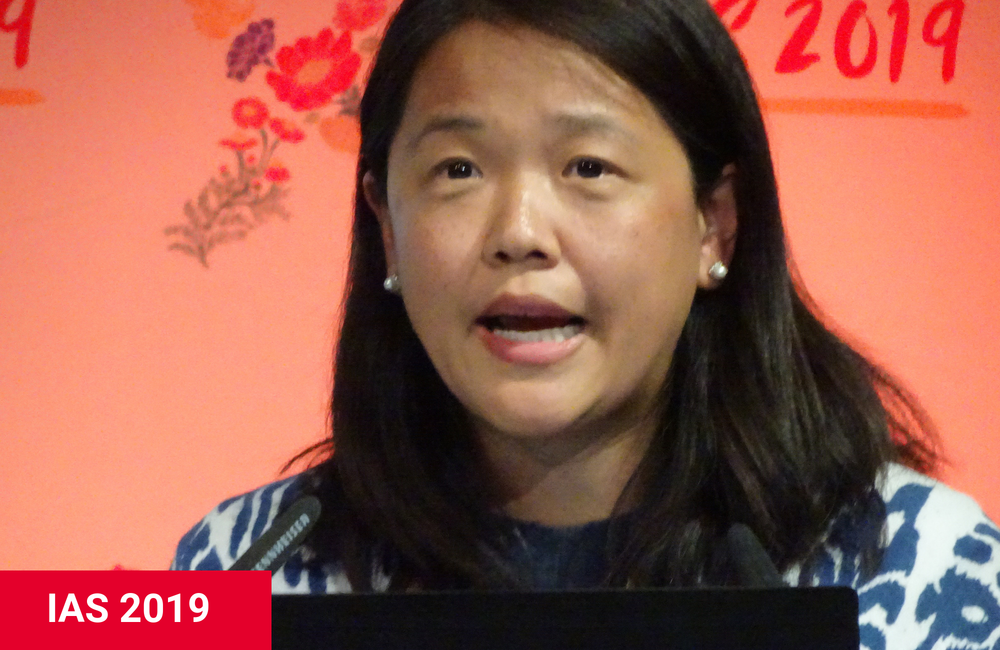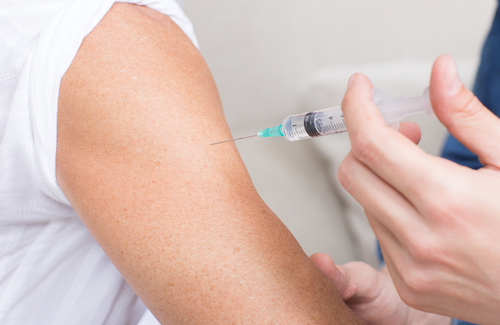
Several studies of new types of HIV drug that have previously only been in pre-clinical (laboratory or animal) studies, or in drug level studies in HIV-negative people, were presented at the 10th International AIDS Society Conference on HIV Science (IAS 2019) in Mexico City.
Dr Grace Chen from the Vaccine Research Centre of the US National Institute of Allergies and Infectious Diseases (NIAID) reported on the safety and virological effects of two broadly neutralising antibodies, VRC01 and VRC07-523.
Although the virological effects of these antibodies have been tested before, this was the first safety and virological-activity study of the ‘LS’ version of the antibodies. This adds a sequence to the antibody protein that makes them bind more tenaciously to cells, meaning they have a much longer half-life in the body.
Seven participants with HIV aged between 18 and 70 received a single dose of VRC01-LS, and nine participants a single dose of VRC07-523-LS. They were followed for three days to check on the immediate immune-system reactions to the antibodies and up to 56 days to detect any more slowly developing side-effects.
Antibodies are immunologically active proteins, which means they can have unexpected effects on the immune system, both adverse and beneficial. As well as acting as HIV entry inhibitors, they can flag up cells for destruction by other parts of the immune system, and can form ‘immune complexes’ consisting of antibodies and viral particles bonded together, which can then have a vaccine-type effect.
VRC07-523-LS appeared more virologically effective than VRC01-LS but also produced a somewhat higher rate of transient immunological side-effects such as local inflammation and mild fever-like symptoms. No clinically significant adverse events were ascribed to VRC01-LS but two were ascribed to VRC07-523-LS; injection site numbness, which resolved after a day, and a temporary decline in the immune cells called neutrophils, which resolved after eight days.
Seven days after an infusion of the antibodies, fewer than half of the people given VRC01-LS had a viral load reduction of more than 0.5 logs (a threefold reduction); but eight out of nine VRC07-523-LS recipients had a viral load reduction of more than 1.2 logs (a 16-fold reduction).
At a press conference, principal investigator Dr Pablo Tebas said that a forthcoming study would look at the effects of VRC07-523-LS infusions in combination with injectable cabotegravir, both given every two months.
They were also devising a study giving people combination therapy with several broadly neutralising antibodies and then stopping their antiretroviral therapy (ART), hoping to improve on a study published last year that enabled the majority of a group of eleven people to take five or more months off ART without their viral load reappearing.
In the longer-term, high-tech possibilities exist such as developing immune complexes to act as therapeutic vaccines or ferrying the antibodies into cells as messenger RNA molecules (mRNAs), which could enable the cells to generate the antibodies themselves. But, Tebas warned, “It may be three to five years before we’ll have a candidate therapy to advance into proof-of-concept trials.”
Vesatolimod, first TLR-7 agonist in human trials, passes safety test
An example of the kind of drug that could be combined with broadly neutralising antibodies is vesatolimod, formerly known as GS-9620. This drug acts on a cell receptor called TLR7 that alerts the innate immune system, the oldest and fastest-acting part of the immune system, to the presence of foreign molecules. It’s fair to say that at present it’s a drug with potential, rather than one with a clear role. Originally its immune-stimulating properties led to it being investigated as a latency-reversing agent in so-called ‘kick and kill’ strategies, but it could also be used to alert the immune system to the presence of other drugs such as therapeutic vaccines and strengthen the immune response to them.
In monkey studies, it has been used successfully to induce viral control off ART. Given to monkeys in combination with broadly neutralising antibodies, it was able to induce five out of eleven to become viral controllers off ART, and three out of nine when it was given in combination with a therapeutic vaccine. Interestingly, viral control occurred not immediately, but several months after ART was withdrawn, as if the drug was ‘teaching’ the immune system to recognise HIV.
The first human safety study of this agent in HIV-positive people taking ART was reported at IAS 2019 in Mexico.
In this dose-escalation study, six different doses of vesatolimod were given as single oral pills spaced two weeks apart (it is envisaged that, as an immune-modulating agent rather than an antiretroviral, it might be dosed about once a fortnight).
These were given to six groups of six patients each, with a total of 36 people on the drug, while two in each group were given placebo, so 12 participants received placebo. The six doses were 1, 2 and 4mg pills given six times, 6 and 8 mg doses given ten times, and a 10mg dose rising to 12mg after the third dose, also given ten times. So 18 patients received lower doses of vesatolimod over an 11-week period, while another 18 received higher doses over a 19-week period. All patients were followed out to 22 weeks.
The participants were largely male (5 out of 48 or about 10% were women), had an average age of 48, had been diagnosed with HIV for between 6 and 15 years, and had been on ART for between 4 and 14 years.
There were no serious adverse events related to the drug and no laboratory abnormalities; one participant did experience seriously raised creatinine, often a sign of kidney damage, but this was related to “strenuous exercise”.
The 1, 2, 4 and 6mg doses of the drug were biologically inactive, but the 8, 10 and 12mg doses produced transient rises in the proportion of natural killer (NK) cells that were activated, from a baseline of about 20% to 50-80%, a sign that the innate immune system was responding. However, there were similar rises in T-cells too, so vesatolimod seems to activate the adaptive immune system too. Doses of at least 6mg induced significant production of the virus-killing immune modulator interferon.
Vesatolimod produced immune activation without producing transient increases in viral load, which may be a strength. The highest viral load seen in a participant receiving vesatolimod was 69 copies/ml in someone receiving the 4mg dose, and this was the only case of a viral load over 50 copies/ml – except, ironically, in a participant receiving placebo, who experienced a viral ‘blip’ to nearly 2500 copies/ml.
This safety and dose-finding study of vesatolimod shows that there are possibly useful effects on the immune system in doses over 8mg, and that doses up to 12mg produce few side-effects.
In a press conference, Gilead’s Dr Romas Geleziunas said that the drug had produced a dramatic decline in the amount of reservoir cells containing HIV in the monkey studies. Trials evaluating the efficacy of vesatolimod were underway to see if we can reproduce in humans the success already seen in monkeys, he added.
He was asked by an audience member whether there would be more studies in women, as more and more data were coming out showing that there were gender differences in the way women responded to HIV drugs, especially reverse transcriptase inhibitors. This might be particularly important for TLR7 agonists, as the TLR7 gene lies on the X chromosome.
Chen G et al. Safety and virologic effect of the HIV-1 broadly neutralising antibodies, VRC01LS or VRC07-523LS, administered to HIV-infected adults in a phase 1 clinical trial. 10th IAS Conference on HIV Science (IAS 2019) Mexico City. Abstract WEAA0305LB, 2019.
View the abstract on the conference website.
Riddler SA et al. Vesatolimod (GS-9620) Is Safe and Pharmacodynamically Active in HIV-Infected Individuals. 10th IAS Conference on HIV Science (IAS 2019), Mexico City. Abstract WEAA0304, 2019.
View the abstract on the conference website.
Download the slides from the conference website.
Update: Following the conference presentation, this study was published in a peer-reviewed journal:
Riddler SA et al. Vesatolimod, a toll-like receptor 7 agonist, induces immune activation in virally suppressed adults with HIV-1. Clinical Infectious Diseases, ciaa1534, October 2020.

